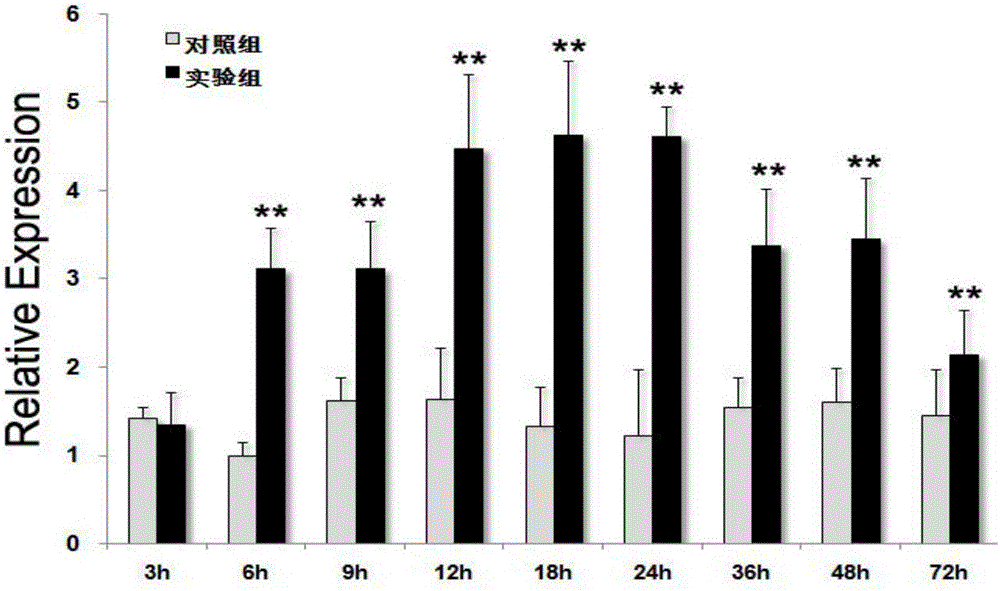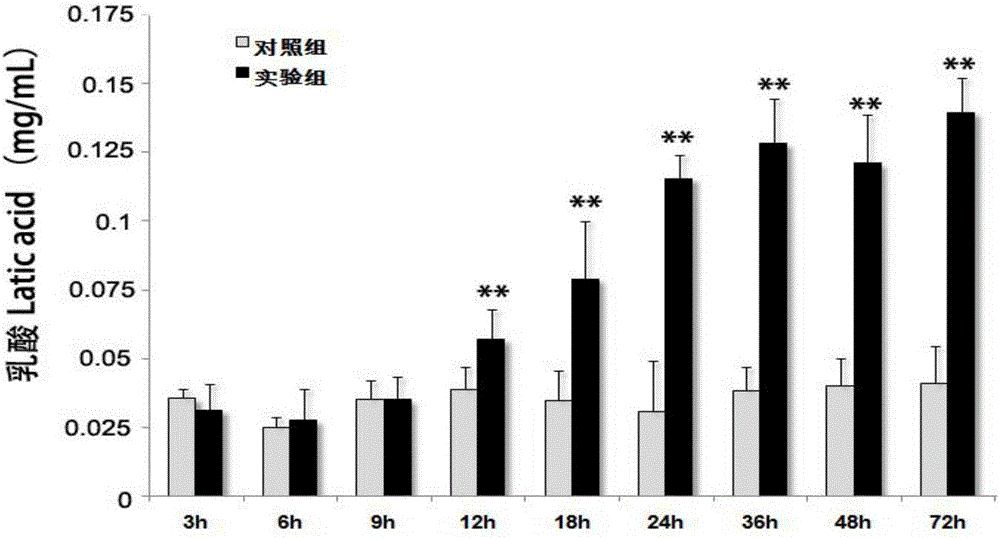Method for analyzing hypoxia stress on shrimps by detecting HURP1 gene expression
A gene expression, shrimp technology, applied in the field of molecular biology, can solve the problem of determining the hypoxic stress, shrimp farming loss, growth rate, and adverse effects of immune function in Littoria vannamei
- Summary
- Abstract
- Description
- Claims
- Application Information
AI Technical Summary
Problems solved by technology
Method used
Image
Examples
Embodiment
[0024] 1. Acquisition of experimental samples
[0025] Select 400 Litopenaeus vannamei (about 7g / head) with uniform specifications, and randomly divide them into experimental group and control group equally, with 200 prawns in each group. The control group was fully oxygenated and tested every two hours with a dissolved oxygen meter to ensure that the dissolved oxygen in the water was above 5mg / L; the experimental group used the method of filling the water with nitrogen combined with oxygen to control the dissolved oxygen in the water to 1.2mg / L (generally considered Dissolved oxygen in water is 1.2 mg / L (the lower limit of dissolved oxygen acceptable to Litopenaeus vannamei), which is tested by a dissolved oxygen meter every two hours. When the dissolved oxygen in the water of the experimental group decreased to 1.2 mg / L, the timing began, and the hemolymph samples of Litopenaeus vannamei were taken at 3, 6, 9, 12, 18, 24, 36, 48 and 72 hours after the experiment (every 5 shr...
PUM
 Login to View More
Login to View More Abstract
Description
Claims
Application Information
 Login to View More
Login to View More - R&D
- Intellectual Property
- Life Sciences
- Materials
- Tech Scout
- Unparalleled Data Quality
- Higher Quality Content
- 60% Fewer Hallucinations
Browse by: Latest US Patents, China's latest patents, Technical Efficacy Thesaurus, Application Domain, Technology Topic, Popular Technical Reports.
© 2025 PatSnap. All rights reserved.Legal|Privacy policy|Modern Slavery Act Transparency Statement|Sitemap|About US| Contact US: help@patsnap.com



